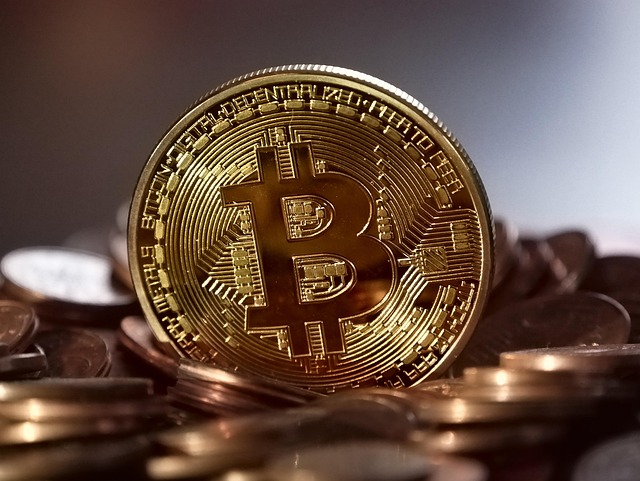BTC Network Fee in 2025: Costs, Tips & Insights
Author: Jameson Richman Expert
Published On: 2025-11-01
Prepared by Jameson Richman and our team of experts with over a decade of experience in cryptocurrency and digital asset analysis. Learn more about us.
BTC network fee is the small but crucial cost every Bitcoin user pays to get a transaction confirmed on-chain. This article explains what BTC network fees are, how they are calculated, why they rise and fall, and practical strategies to reduce fees and improve confirmation times in 2025. You’ll find clear examples, fee-estimation tools, wallet settings, comparisons with other networks, and recommended resources to help you manage and forecast Bitcoin transaction costs effectively.

What is a BTC Network Fee?
A BTC network fee (commonly called a Bitcoin transaction fee) is the amount paid to miners (and validators in a proof-of-work system) to include your transaction in a block. Because Bitcoin blocks have limited capacity (~1-4 MB effective block weight), users compete by attaching fees. Miners prioritize transactions with higher fees per unit of transaction size, so paying more generally means faster confirmations.
For a deep primer on Bitcoin including its decentralized design and transaction model, see the official Bitcoin documentation at Bitcoin Core documentation and the comprehensive overview on Wikipedia: Bitcoin.
Why Fees Exist: Incentives and Block Limits
- Security Incentive: Fees reward miners and secure the network after block subsidy decreases over time due to halvings.
- Block Capacity: Each block has a maximum weight, creating scarcity. Fee markets allocate space to highest-paying transactions.
- Spam Prevention: Fees discourage transaction spam, preserving bandwidth and storage for nodes.
How BTC Network Fees Are Calculated
Bitcoin fees are typically expressed in satoshis per virtual byte (sats/vB), where 1 satoshi = 0.00000001 BTC. The total fee = sats/vB × transaction virtual size (vsize). Modern wallets show recommended sats/vB for different confirmation targets (e.g., next block, within 3 blocks, within 24 blocks).
Transaction Size and SegWit
Transaction size depends on inputs, outputs, and whether SegWit is used. Segregated Witness (SegWit) introduced a concept of virtual size (vsize) that discounts witness data, lowering effective fees for SegWit transactions. Using SegWit addresses (bech32 native addresses starting with bc1) typically reduces required fees versus legacy addresses.
Example Calculation
Example: A transaction of 200 vbytes with a fee rate of 50 sats/vB results in a fee of 200 × 50 = 10,000 sats = 0.0001 BTC. At a BTC price of $50,000, that fee equals $5.00.

Factors That Change BTC Network Fees
- Mempool congestion: When many users broadcast transactions, the mempool fills and fee rates rise to gain inclusion.
- Block subsidy and miner behavior: After halvings, fee market importance rises. Miners may prefer higher-fee transactions for revenue.
- Large on-chain activity: Events like NFT drops, new exchange withdrawals, or macro markets moving can spike traffic.
- Wallet and address type: Legacy vs SegWit vs Taproot addresses differ in vsize and therefore fees.
- Batching and consolidation: Exchanges that batch payments reduce average fees; heavy consolidation during low-fee periods reduces future fees.
Tools to Monitor BTC Network Fee Levels
Use fee-estimators and mempool explorers to decide fee rates:
- Mempool.space — live mempool visualization and fee estimates.
- Jochen Hoenicke’s fee chart — historical fee distribution.
- Wallet built-in estimators — Electrum, Bitcoin Core and many mobile wallets provide recommended sats/vB for different confirmation targets.
Strategies to Lower BTC Network Fees
Below are actionable techniques you can apply today to reduce fees without sacrificing necessary confirmation speed.
1. Use SegWit and Taproot Addresses
Prefer wallets that support native SegWit (bech32) and Taproot (bech32m). These address types reduce vsize and lower fees. Example wallets: Electrum, Sparrow (desktop), many modern mobile wallets. Taproot further optimizes complex scripts and can lower on-chain footprint for advanced use-cases.
2. Batch Transactions
If you operate an exchange, business, or make multiple payouts, batching multiple outputs into a single transaction reduces average fee per payment. Exchanges commonly batch thousands of user withdrawals to save fees.
3. Consolidate UTXOs During Low-Fee Windows
UTXOs (unspent transaction outputs) fragment over time. Consolidating small UTXOs into larger ones during low-fee periods lowers future transaction sizes. Only consolidate when fee rates are low, and avoid consolidating too close to expected activity to prevent linking privacy-sensitive UTXOs.
4. Use Replace-by-Fee (RBF) Wisely
RBF allows you to broadcast a higher-fee replacement if you need faster confirmation. Enable RBF in wallets when necessary, but consider that some services flag incoming RBF transactions as less final for merchant acceptance.
5. Consider Off-chain Solutions: Lightning Network
For small, frequent payments, use the Lightning Network. Lightning routes payments off-chain using payment channels, drastically reducing fees and increasing speed. Open a channel when on-chain fees are low to benefit later.
6. Choose Optimal Timing
Fees fluctuate by hour and day. Historically, weekends and off-peak hours often have lower demand. Check mempool activity before sending non-urgent transactions and schedule them for periods with low congestion.

Wallet Settings and Best Practices
When sending BTC, check these wallet settings:
- Enable SegWit/Taproot addresses by default.
- Review recommended fee options: economy, normal, priority.
- If privacy is important, avoid fee techniques that reveal address linking (e.g., avoid unnecessary batching with unrelated addresses).
- Set an explicit fee rate in sats/vB rather than fiat, since BTC price changes don’t affect sats/vB calculations.
- Use wallets that support dynamic fee estimation based on mempool and fee algorithms.
Fee Estimation Algorithms: How Wallets Suggest Fees
Fee estimators analyze the mempool, recent block confirmations, and fee distribution to recommend rates. Common methods include:
- Statistical modeling of confirmation times versus fee rate.
- Percentile-based recommendations (e.g., pay the 25th percentile to confirm within 3 blocks).
- Historical data analysis to predict near-term miner behavior.
Popular wallets like Bitcoin Core use Bitcoin Core’s fee estimator derived from node data. Third-party wallets may rely on external APIs for more real-time recommendations.
Real-World Examples and Calculations (2025 Scenario)
Below are example scenarios showing how fees translate into cost at different sats/vB rates. Assume transaction sizes common in 2025:
- Simple P2WPKH (single input, two outputs) ≈ 120 vbytes.
- Typical 2-input, 2-output SegWit tx ≈ 200 vbytes.
- Complex transactions (many inputs) can exceed 500–2000 vbytes.
Example 1 — Small Payment
Transaction size: 120 vB. Fee rate: 30 sats/vB. Fee = 120 × 30 = 3600 sats = 0.000036 BTC. If BTC = $60,000, fee ≈ $2.16.
Example 2 — Medium Payment
Transaction size: 200 vB. Fee rate: 80 sats/vB during high congestion. Fee = 200 × 80 = 16,000 sats = 0.00016 BTC. At $60,000, fee ≈ $9.60.
Example 3 — Large Payout (Batching)
Batching 50 payouts into one transaction might produce a vsize of 2000 vB total. Even at 80 sats/vB, fee = 2000 × 80 = 160,000 sats = 0.0016 BTC. If the same 50 payouts were separate 40 vB outputs each with overhead, batching can dramatically reduce per-payout cost.

Compare BTC Network Fee to Other Networks
Comparatively, Ethereum historically charged gas fees denominated in Gwei and spiked wildly during congestion. Layer 2s and alternative chains can offer lower nominal fees but introduce trade-offs (centralization risk, security model, liquidity). For context on different trading setups and platform choices, you may find practical trading app and bot guides useful:
- Best AI crypto trading bot for beginners — practical picks and setup
- Top trading apps in India for beginners
- Guide on crypto spot trading and Islamic perspectives
When to Pay Higher Fees — Practical Guidelines
Pay a higher fee when:
- You need immediate confirmation (e.g., trading arbitrage, security-sensitive withdrawals).
- You are moving large amounts and want to avoid long mempool delays.
- Opening or closing a Lightning channel when on-chain liquidity timing is critical.
Use lower fees for routine transfers where confirmation within a day or two is acceptable.
Advanced Techniques: Coin Selection and Privacy Considerations
Coin selection algorithms in wallets decide which UTXOs to spend. Smart coin selection reduces fees and preserves privacy:
- Avoid spending many small UTXOs in a single transaction unless necessary (costly vsize).
- Prefer algorithms that minimize change outputs to prevent address linking.
- Use privacy-focused wallets (e.g., Wasabi, Samourai) that include coinjoin or privacy tools — but be aware of regulatory and custodial acceptance implications.

How Exchanges Affect BTC Network Fees
Exchanges often reduce on-chain fees via batching, consolidation, and internal off-chain ledger transfers. If you are withdrawing BTC from an exchange, the withdrawal fee you pay may include a markup. To optimize cost:
- Use exchanges that support SegWit/Taproot withdrawals.
- Compare withdrawal fees across platforms before moving large amounts.
- Consider depositing once and using on-exchange operations to avoid repeated on-chain fees.
Sign up links for exchanges that support modern address types and often offer promotional benefits:
Common Questions About BTC Network Fee
How long does it take to confirm a low-fee transaction?
Confirmation time depends on current mempool conditions. A low-fee (e.g., 1–5 sats/vB) might confirm within hours to days when the mempool is quiet, but could remain unconfirmed for longer during congestion. You can use RBF to bump fees if needed.
Will fees drop after the next halving?
Halvings reduce miner block subsidy, increasing the relative importance of fees, which could put upward pressure on fees over time. However, improvements such as wider SegWit/Taproot adoption, batching, and Lightning Network growth can offset some pressure. Predicting exact fee direction requires monitoring miner revenue trends and on-chain activity.
Are fees refundable if a transaction is stuck?
No — once a transaction is broadcast the fee paid is attached to that TX. If it is stuck and eventually drops, you may create a replacement transaction (RBF) with an increased fee or, in some wallets, use CPFP (Child Pays for Parent) where you spend an output from the stuck transaction with a high fee to incentivize miners to include both.
Forecasts and Considerations for 2025
In 2025, expect these trends to influence BTC network fees:
- Greater Taproot and Lightning adoption should lower average on-chain costs per user for many use-cases.
- Increased DeFi and tokenization activity on Bitcoin (via Ordinals or layer-2s) could add sporadic congestion and fee spikes.
- Wallet UX improvements and more sophisticated batching will reduce average fees for services and retail users.
- Macro events and institutional flows will still create periodic fee surges.

Practical Checklist: Sending BTC with Minimal Fees
- Use native SegWit (bc1) or Taproot (bech32m) addresses.
- Check mempool.space or your wallet’s estimator for recommended sats/vB.
- Consolidate UTXOs during low-fee periods.
- Batch payments if you are making multiple outputs.
- Consider Lightning for small, frequent payments.
- Use RBF or CPFP if a transaction remains stuck and you need faster confirmation.
Further Reading and High-Authority Resources
Helpful, trustworthy sources for deeper technical understanding:
- Bitcoin — Wikipedia (overview and history)
- Bitcoin Core — official documentation (developer and node operator docs)
- Mempool.space (live mempool and fee data)
- Lightning Network — Wikipedia (layer-2 payments)
Helpful Articles and Guides
For practical trading and platform setup that complement on-chain fee management, see these guides:
- Practical picks and safety tips for AI crypto trading bots
- Is crypto spot trading haram? Islamic guide
- Best trading apps in India for beginners

Conclusion: Mastering BTC Network Fees
Understanding and managing the BTC network fee is essential for both occasional Bitcoin users and professionals who move on-chain value frequently. By using modern address types (SegWit/Taproot), monitoring mempool indicators, batching transactions, and leveraging off-chain solutions like Lightning, you can significantly reduce costs and improve reliability. Always use reputable wallets and refer to the authoritative resources listed above to maintain best practices.
Ready to trade or secure your BTC with recommended platforms? Consider creating accounts on reputable exchanges that support modern address standards and competitive withdrawal options:
If you want, I can analyze current mempool conditions and recommend a specific sats/vB target for a sample transaction size, or help you pick a wallet best suited to minimize fees and improve privacy in 2025.